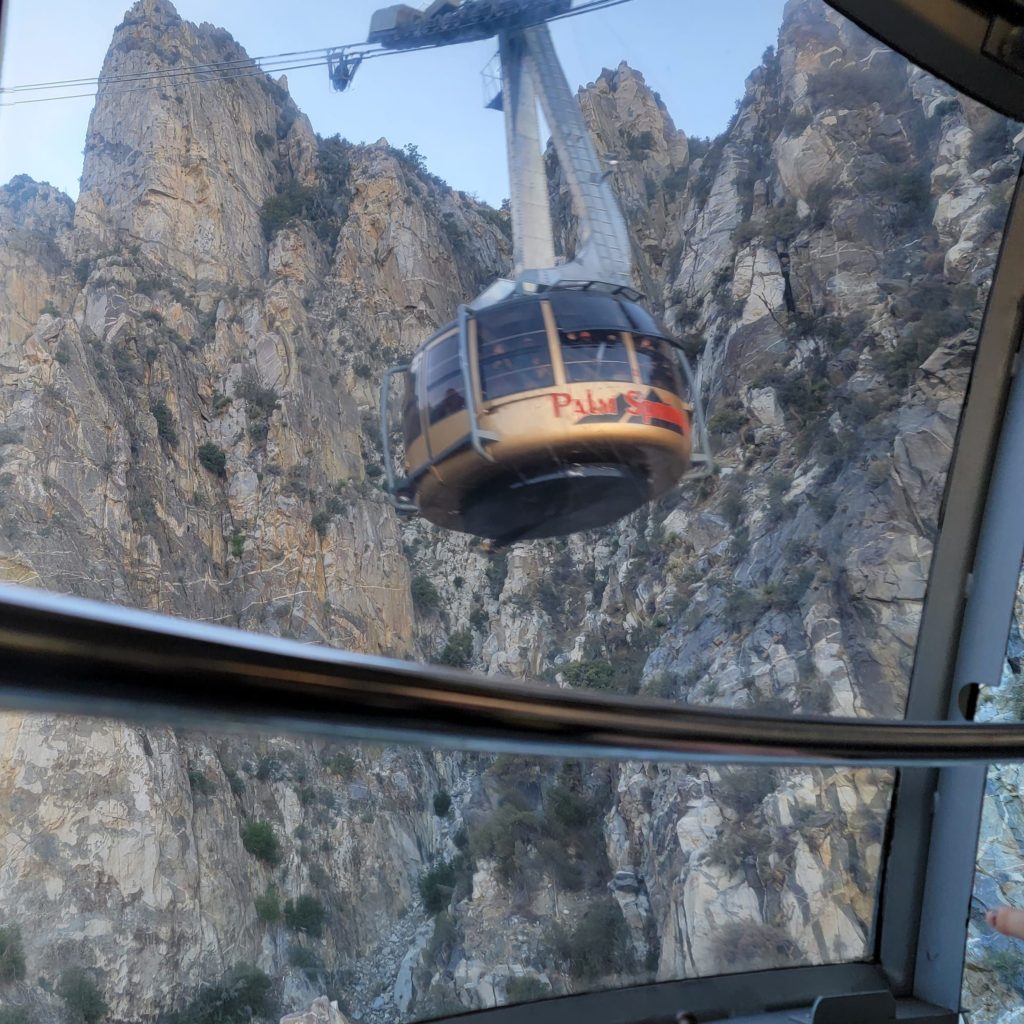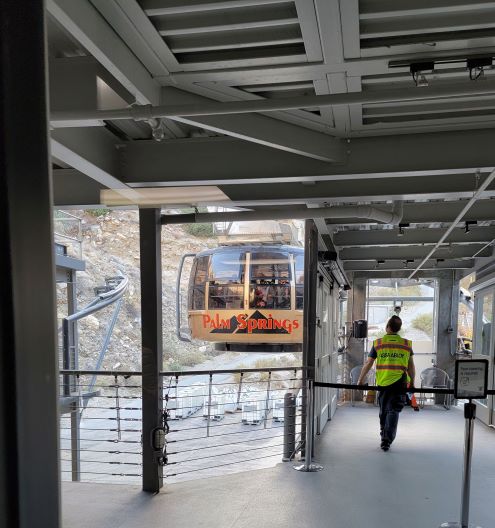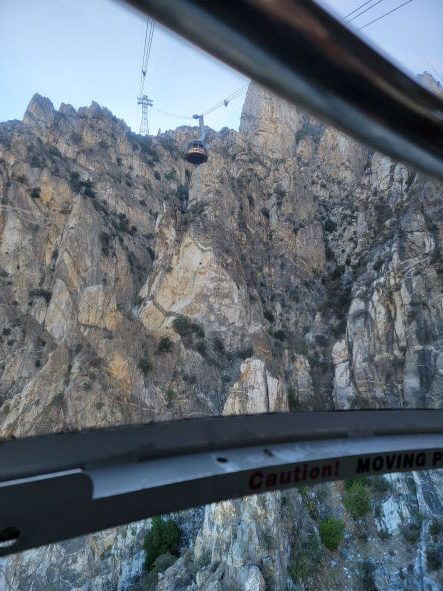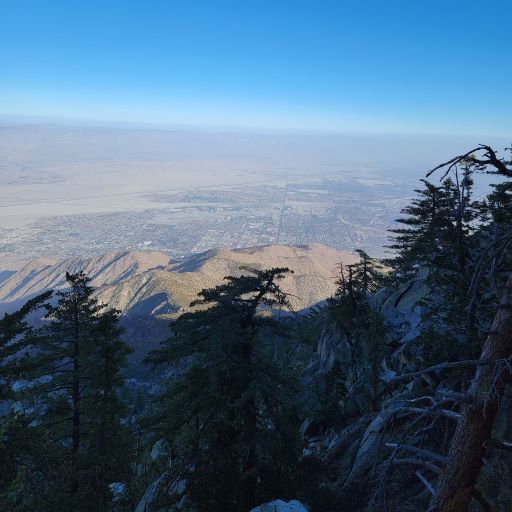Indian Canyons, Palm Springs
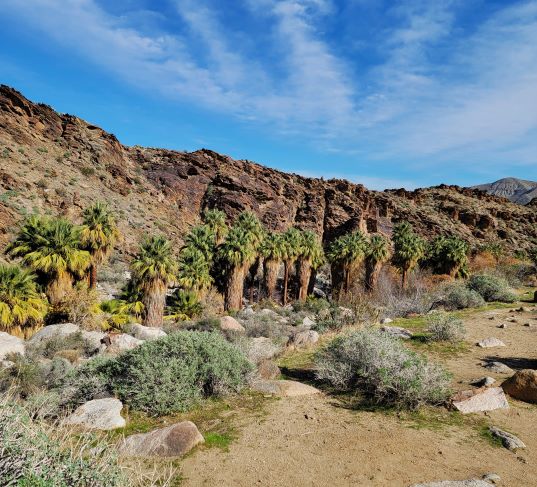
A trip to the Palm Springs area might be your pleasure if you are looking for world-class golf courses. Then again, with countless up-scale restaurants and bars steeped in old Hollywood legends maybe your goal is to find places Marilyn Monroe or Dean Martin ate and drank. Speaking of Marilyn, take a walking tour or a driving tour of famous homes. Of course, fantastic shopping is just around the corner.
Did you know you can also spend some time with more than 150 species of plants…all within a half-mile radius? Did you know you could be walking through an actual oasis?
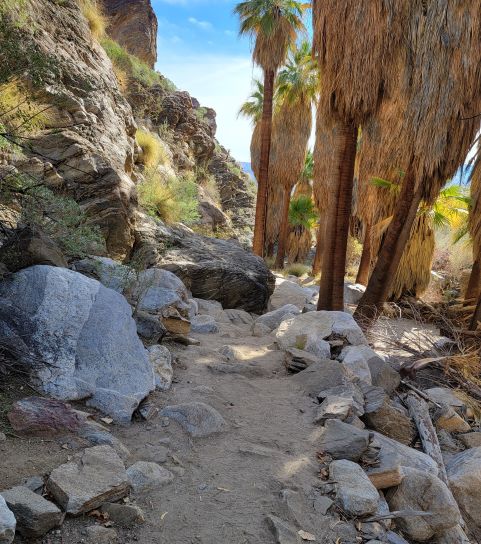
Indian Canyons are the ancestral home of the Agua Caliente Band of Cahuilla Indians. The canyons are especially sacred to the Agua Caliente people. They are also historically important to scientists and nature lovers.
The Agua Caliente people have lived here for thousands of years. They grew crops of melons, squash, beans, and corn. They also gathered plants and seeds for food, medicines, and basket weaving. Some of their house pits, irrigation ditches, dams, and reservoirs still exist in the canyons.
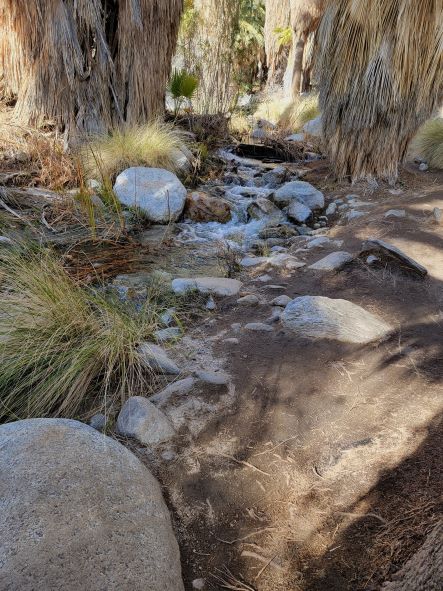
The Indian Canyons and Tahquitz Canyon are listed on the National Register of Historic Places. Palm Canyon is the world’s largest California Fan Palm Oasis.
We spent a couple of hours walking along the Andreas Canyon. The scenic trail was considered easy and most of it was. It is narrow in spots so be prepared to wait if there are other people ahead of you or are coming towards you. There are also large rocks to step up on or down off, so wear good walking shoes.
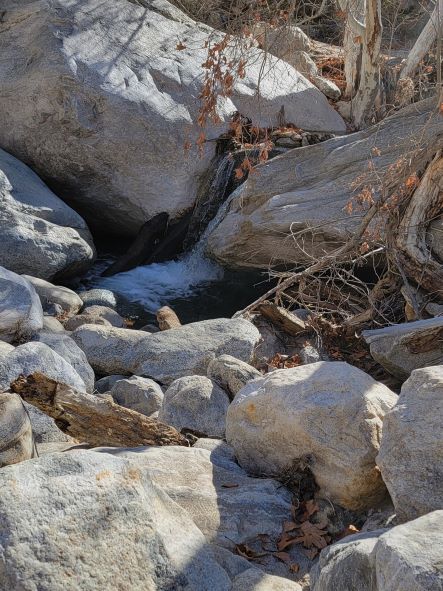
Huge rocks, which seem to fill the sky, line the trail on one side. Stately palms of all sizes line the clear-water creek on the other side. Singing, chirping, and happy birds accompanied us on our walk.
Keep in mind, this is a desert hike. It may look like the beautiful, lush oasis it is but it is still the dessert. During part of this walk we were shaded and cool as we made our way along the creek. Another part found us walking along the top of the ridge, in the bright sun. We were glad for our water bottles.
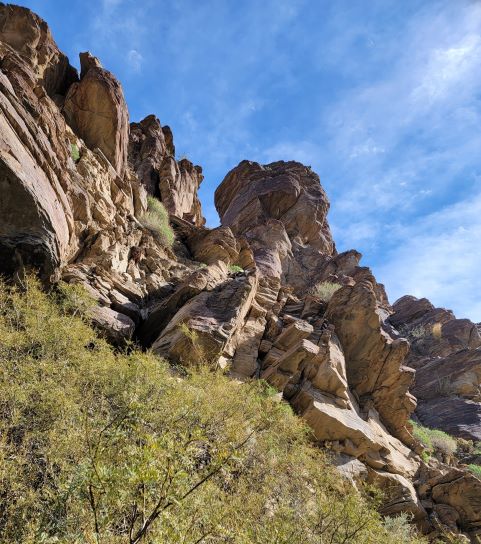
After our walk, we drove up to the Palm Canyon area part of the canyons. This 15 mile-long is abundant with more California Fan Palms and stark, rocky gorges overlooking the desert landscape.
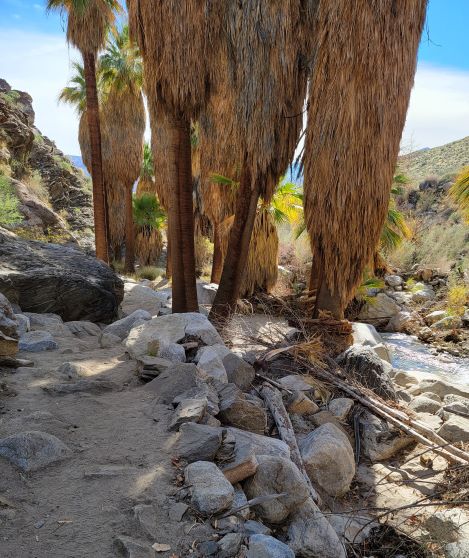
Palm Springs has so much to offer. Take time to explore the Indian Canyons area next time you are in the area. It’s a welcome contrast.
If You Go: Indian Canyons is located at 38520 South Palm Canyon Drive, Palm Springs, CA. There is a charge to enter. Find out more at https://www.indian-canyons.com/
Looking for more places to explore in Palm Springs? Check out https://travelsandescapes.net/?s=palm+springs
